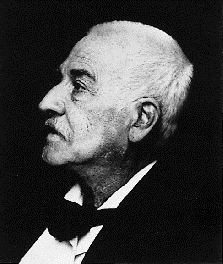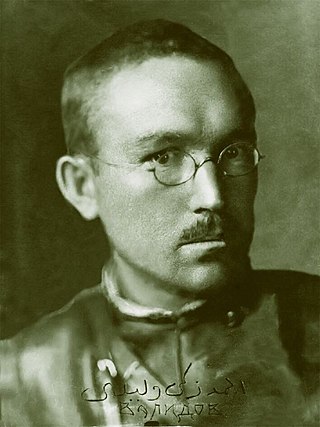Related Research Articles

A civilization is any complex society characterized by the development of the state, social stratification, urbanization, and symbolic systems of communication beyond natural spoken language.

Carl Jacob Christoph Burckhardt was a Swiss historian of art and culture and an influential figure in the historiography of both fields. He is known as one of the major progenitors of cultural history. Sigfried Giedion described Burckhardt's achievement in the following terms: "The great discoverer of the age of the Renaissance, he first showed how a period should be treated in its entirety, with regard not only for its painting, sculpture and architecture, but for the social institutions of its daily life as well."

James Hadley Billington was an American academic and author who taught history at Harvard and Princeton before serving for 42 years as CEO of four federal cultural institutions. He served as the 13th Librarian of Congress after being nominated by President Ronald Reagan in 1987, and his appointment was approved unanimously by the U.S. Senate. He retired as Librarian on September 30, 2015.

A cradle of civilization is a location and a culture where civilization was developed independent of other civilizations in other locations. The formation of urban settlements (cities) is the primary characteristic of a society that can be characterized as "civilized". Other characteristics of civilization include a sedentary non-nomadic population, monumental architecture, the existence of social classes and inequality, and the creation of a writing system for communication. The transition from simpler societies to the complex society of a civilization is gradual.

A Persianate society is a society that is based on or strongly influenced by the Persian language, culture, literature, art and/or identity.

Gaochang, also called Khocho, Karakhoja, Qara-hoja, Kara-Khoja or Karahoja, was a ruined ancient oasis city on the northern rim of the inhospitable Taklamakan Desert in present-day Xinjiang, China. The site is also known in published reports as Chotscho, Khocho, Qocho or Qočo. During the Yuan dynasty and Ming dynasty, Gaochang was referred to as "Halahezhuo" (Qara-khoja) and Huozhou.
Pax Sinica is a historiographical term referring to periods of peace and stability in East Asia, Northeast Asia, Southeast Asia, and Central Asia led by China. A study on the Sinocentric world system reveals that the multiple periods of Pax Sinica, when taken together, amounted to a length of approximately two thousand years.

Zeki Velidi Togan, was a Bashkir historian, Turkologist, and leader of the Bashkir revolutionary and liberation movement, doctor of philosophy (1935), professor, honorary doctor of the University of Manchester (1967).
European studies is a field of study offered by many academic colleges and universities that focuses on the History of Western civilization and the evolution of Western culture, as well as on current developments in European integration.

Mesoamerican pyramids form a prominent part of ancient Mesoamerican architecture. Although similar in some ways to Egyptian pyramids, these New World structures have flat tops and stairs ascending their faces, more similar to ancient Mesopotamian Ziggurats. The largest pyramid in the world by volume is the Great Pyramid of Cholula, in the east-central Mexican state of Puebla. The builders of certain classic Mesoamerican pyramids have decorated them copiously with stories about the Hero Twins, the feathered serpent Quetzalcoatl, Mesoamerican creation myths, ritualistic sacrifice, etc. written in the form of Maya script on the rises of the steps of the pyramids, on the walls, and on the sculptures contained within.

The Painted Grey Ware culture (PGW) is an Iron Age Indo-Aryan culture of the western Gangetic plain and the Ghaggar-Hakra valley in the Indian subcontinent, conventionally dated c.1200 to 600–500 BCE, or from 1300 to 500–300 BCE It is a successor of the Cemetery H culture and Black and red ware culture (BRW) within this region, and contemporary with the continuation of the BRW culture in the eastern Gangetic plain and Central India.
Michael Gedaliah Kammen was an American professor of American cultural history in the Department of History at Cornell University. At the time of his death, he held the title "Newton C. Farr professor emeritus of American history and culture".
Dwight Macdonald was an American writer, critic, philosopher, and activist. Macdonald was a member of the New York Intellectuals and editor of their leftist magazine Partisan Review for six years. He also contributed to other New York publications including Time, The New Yorker, The New York Review of Books, and Politics, a journal which he founded in 1944.
The composite Turko-Persian, Turco-Persian, or Turco-Iranian is the distinctive culture that arose in the 9th and 10th centuries AD in Khorasan and Transoxiana. According to the modern historian Robert L. Canfield, the Turco-Persian tradition was Persianate in that it was centered on a lettered tradition of Iranian origin; it was Turkic in so far as it was for many generations patronized by rulers of Turkic ancestry; and it was "Islamicate" in that Islamic notions of virtue, permance, and excellence infused discourse about public issues as well as the religious affairs of the Muslims, who were the presiding elite."

Richard D. Hansen is an American archaeologist who is an adjunct professor of anthropology at the University of Utah.

The Civilization Fund Act, also known as the Indian Civilization Act, was an Act passed by the United States Congress on March 3, 1819. The Act encouraged activities of benevolent societies in providing education for Native Americans and authorized an annuity to stimulate the "civilization process". Thomas L. McKenney lobbied Congress in support of the legislation. It was originally intended to support schools in native villages and areas, such as those established by religious missions. These were operated by both Protestant and Catholic organizations. In 1891 through the early 20th century, the government used the Civilization Fund Act as authority to establish numerous Native American boarding schools.

The Library of Congress (LOC) is a research library in Washington, D.C., that serves as the library and research service of the U.S. Congress and the de facto national library of the United States. Founded in 1800, the library is the United States's oldest federal cultural institution. The library is housed in three elaborate buildings on Capitol Hill. It also maintains a conservation center in Culpeper, Virginia. The library's functions are overseen by the Librarian of Congress, and its buildings are maintained by the Architect of the Capitol. The Library of Congress is one of the largest libraries in the world. Its collections contain approximately 173 million items, and it has more than 3,000 employees. Its collections are "universal, not limited by subject, format, or national boundary, and include research materials from all parts of the world and in more than 470 languages".

East Asia is a region of Asia, which is defined in both geographical and ethno-cultural terms. The modern states of East Asia include China, Japan, Mongolia, North Korea, South Korea, and Taiwan. Hong Kong and Macau, two coastal cities located in the south of China, are autonomous regions under Chinese sovereignty. The economies of Japan, South Korea, China, Taiwan, Hong Kong, and Macau are some of the world's largest and most prosperous economies. East Asia borders Siberia and the Russian Far East to the north, Southeast Asia to the south, South Asia to the southwest, and Central Asia to the west. To the east is the Pacific Ocean and to the southeast is Micronesia.

The Western world, also known as the West, primarily refers to various nations and states in the regions of Australasia, Western Europe, and Northern America; with some debate as to whether those in Eastern Europe and Latin America also constitute the West. The Western world likewise is called the Occident in contrast to the Eastern world known as the Orient. The West is considered an evolving concept; made up of cultural, political, and economic synergy among diverse groups of people, and not a rigid region with fixed borders and members. Definitions of "Western world" vary according to context and perspectives.
The Lodi dynasty was the last dynasty to rule over Emirate of Multan, from their capital city of Multan in the 10th century.
References
- ↑ "Reinventing 'The Invention of Tradition'?". Leiden University. Retrieved 2023-06-10.
- ↑ Congress, Library of (2011). Library of Congress Subject Headings. Library of Congress. p. 2031.
- ↑ Finkelstein, Claire; Gillman, Derek; Rosén, Frederik, eds. (2022-09-06). The Preservation of Art and Culture in Times of War. Oxford University Press. p. 56. ISBN 978-0-19-761058-9.